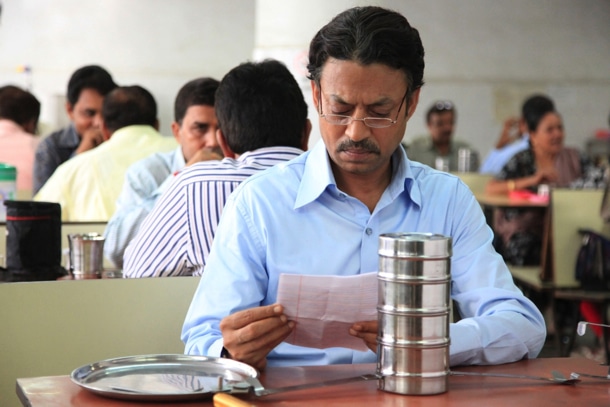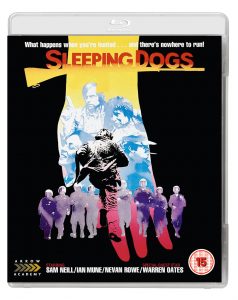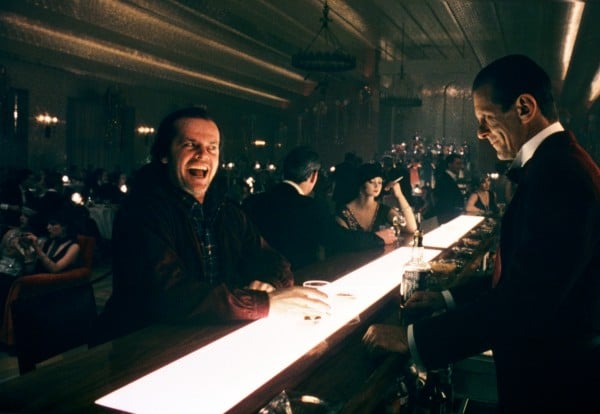The 50 years of the mythical Easy Rider
Presented half a century ago on the Croisette, in Competition at the Festival de Cannes, the film won the Prize for a first work. Co-writer, co-producer and lead actor, Peter Fonda will be in Cannes at the invitation of the Festival to celebrate this anniversary.
Easy Rider (1969, 1h35, USA) by Dennis Hopper
Restored in 4K by Sony Pictures Entertainment in collaboration with Cineteca di Bologna. Restored from the 35mm Original Picture Negative and 35mm Black and White Separation Masters. 4K scanning and digital image restoration by Immagine Ritrovata. Audio restoration from the 35mm Original 3-track Magnetic Master by Chace Audio and Deluxe Audio. Color grading, picture conform, additional image restoration and DCP by Roundabout Entertainment. Colorist: Sheri Eisenberg. Restoration supervised by Grover Crisp.
Midnight Screening of The Shining
The ultimate horror film for an event screening presented by Mexican director Alfonso Cuarón.
The Shining by Stanley Kubrick (1980, 2h26, UK / USA)
A Presentation of Warner Bros. The 4K remastering was done using a new 4K scan of the original 35mm camera negative. The mastering was done at Warner Bros. Motion Picture Imaging, and the color grading was done by Janet Wilson, with supervision from Stanley Kubrick’s former personal assistant Leon Vitali.
The 50 years ofLa Cité de la peur
The cult comedy of comic group Les Nuls will be screened at Cannes Classics au Cinéma de la Plage upon the occasion of the 4K restoration of the film for its 25th anniversary with Alain Chabat, Chantal Lauby and Dominique Farrugia in attendance.
La Cité de la peur, une comédie familiale (1994, 1h39, France) by Alain Berbérian
Presented by Studiocanal. A restoration by Studiocanal and TF1 Studio . 4K scanning 16bits from the original negative 35mm on Lasergraphics director. The pre-calibration was done in a projection room equipped by a 4k projector 4k Christie Laser by Pascal Bousquet and additional work of filtering, dusting was done to compensate the imperfection due to the age of the film. Optical illusion composited on DI on Flame to remain close to the quality of the original negative. Calibration validated by Laurent Dailland, director of photography. Original digital sound was used without modification. Work of remastering done by VDM Laboratory.
Luis Buñuel in the spotlight with three films
Three films by Mexican director and screenwriter, with Spanish origin, will be shown this year.
Los Olvidados (The Young and the Damned) (1950, 1h20, Mexico) by Luis Buñuel
Presented by the World Cinema Project. Restored by The Film Foundation’s World Cinema Project at L’Immagine Ritrovata in collaboration with Fundación Televisa, Cineteca Nacional Mexico, and Filmoteca de la UNAM. Restoration funding provided by The Material World Foundation.
Nazarín (1958, 1h34, Mexico) by Luis Buñuel
Presented by Cineteca Nacional Mexico. 3K Scan and 3K Digital Restoration from the original 35mm image negative (preserved by Televisa) and prints positive materials from Cineteca Nacional. Restoration made and financed by Cineteca Nacional Mexico. Mastered in 2K for Digital Projection.
L’Âge d’or (The Golden Age) (1930, 1h, France) by Luis Buñuel
Presented by La Cinemathèque française. A 4K restoration of The Golden Age was done by la Cinemathèque française and le Centre Pompidou, MNAM-CCI/Experimental cinema’s department, at Hiventy Laboratory for the image and at L.E. Diapason’s studio for the sound, using the original nitrate negative, original sound and safety elements.
Tribute to Lina Wertmüller
The first woman director ever nominated as a director at the Academy Awards in 1977 for Pasqualino Settebellezze, Lina Wertmüller will introduce the film with lead actor Giancarlo Giannini in attendance.
Pasqualino Settebellezze (Seven Beauties) (1975, 1h56, Italy) by Lina Wertmüller
Presented by Centro Sperimentale di Cinematografia – Cineteca Nazionale. Restored by Centro Sperimentale di Cinematografia – Cineteca Nazionale with the support of Genoma Films and Deisa Ebano from the original 35mm picture and optical soundtrack negative made available by RTI S.p.A. Digital scanning and restoration work carried out by Cinema Communications in Rome.
The 1951 “Palme d’or”
The Palme d’or was created in 1955 but the Grand Prix awarded to Miracle in Milan by Vittorio De Sica was the equivalent.
Miracolo a Milano (Miracle in Milan) (1951, 1h40, Italy) by Vittorio De Sica
Presented by Cineteca di Bologna. Restored by Fondazione Cineteca di Bologna and Compass Film, in collaboration with Mediaset, Infinity TV, Artur Cohn, Films sans frontières and Variety Communications at L’Immagine Ritrovata laboratory. 4K Scan and Digital Restoration from the original 35mm camera negative and a vintage dupe positive. Colour grading supervised by DoP Luca Bigazzi.
Milos Forman
A devotee of the Festival de Cannes, a former President of the Jury, a director with several lives, Milos Forman passed away one year ago. The restoration of his second film and a documentary will give us the opportunity to pay our tribute and remember him.
Lásky jedné plavovlásky (Loves of a Blonde) (1965, 1h21, Czech Republic) by Milos Forman
A presentation of the Národní filmový archiv, Prague. 4K digital restoration based on the original camera done by the Universal Production Partners and Soundsquare in Prague, 2019. The donors of this project were Mrs. Milada Kučerová and Mr. Eduard Kučera. Restored in partnership with the Karlovy Vary International Film Festival and the Czech Film Fund. French distribution: Carlotta Films.
Forman vs. Forman (Czech Republic / France, 1h17) by Helena Trestikova and Jakub Hejna
Presented by Negativ Film Productions, Alegria Productions, Czech Television, ARTE. A powerful documentary that recounts with emotion the career of director Milos Forman, from the Czech New Wave to Hollywood. Oscars, politics and political upheavals for a life in the service of cinema.
All the restored films of Cannes Classics 2019
Toniby Jean Renoir (1934, 1h22, France)
Presented by Gaumont. First digital restoration in 4K presented by Gaumont with the support of the CNC. Restoration done by L’image retrouvée in Bologna and Paris.
Le Ciel est à vous (1943, 1h45, France) by Jean Grémillon
Presented by TF1 Studio. Restaured version in 4K using two intermediate and a duplicate done by TF1 studio, with the support of the CNC and Coin de Mire cinéma. Digital and photochimical work done by L21 laboratory.
Moulin Rouge (1952, 1h59, UK) by John Huston
Presented and restored by The Film Foundation in collaboration with Park Circus, Romulus Films and MGM with additional funding provided by the Franco-American Cultural Fund, a unique partnership between the Directors Guild of America (DGA), the Motion Picture Association of America (MPAA), the Société des Auteurs, Compositeurs et Editeurs de Musique (SACEM), and the Writers Guild of America, West (WGAW). Restored from the 35mm Original Nitrate 3-Strip Technicolor Negative. 4K scanning, color grading, digital image restoration and film recording by Cineric, Inc., New York. Colorist: Daniel DeVincent. Audio restoration by Chace Audio. Restoration Consultant: Grover Crisp.
Kanal (They Loved Life) (1957, 1h34, Poland) by Andrzej Wajda
Presented by Malavida, in association with Kdr. Scanned, calibrated and restored in 4K under the artistic supervision of Andrzej Wajda and Jerzy Wójcik, second DOP, and regular collaborator of Wajda (Ashes and Diamonds) and one of the greatest Polish DOP. Technical supervision: Waldermar Makula. 4k Scan from the original negative, image and sound. Producted by Studio Filmowe Kadr with the participation of Filmoteka Narodowa. French distribution: Malavida. International Sales: Studio Filmowe Kadr.
Hu shi ri ji (Diary of a Nurse) (1957, 1h37, China) by Tao Jin
Presented by IQIYI et New Ipicture Media co., ltd (NIPM). 4K Scan and 3K Digital Restoration from the original 35mm print positive materials mastered in 2K. Restoration financed by IQIYI & NIPM, and made by L’Immagine Ritrovata (Italy) and Laser Digital Film SRL (Italy).
Hakujaden (The White Snake Enchantress) (1958, 1h18, Japan) by Taiji Yabushita
Presented by Toei Animation Company, ltd., Toei company, ltd. et and National Archive of Japan. The project celebrates the 100th year anniversary for the birth of Japan animation and 60th anniversary for the original theatrical release in 1958.
4K scan and restoration from the original negative, 35mm print, tape materials, and animation cels by Toei lab tech co., ltd. et Toei digital center are carried out. The restored data is stored in 2K.
125 Rue Montmartre (1959, 1h25, France) by Gilles Grangier
Presented by Pathé. 4K Scan and 2k restoration, using the original safety negative (negative image, intermediate and negative optique sound) Work done by Eclair laboratory for the image and L.E Diapason (Léon Rousseau) for the sound part. Restored with the support of the Centre national du cinéma et de l’image animée (CNC).
A tanú (The Witness) (1969, 1h52, Hongrie) by Péter Bacsó
The original uncensored version presented by the Hungarian National Film Fund – Film Archive. The film was restored in 4K using the original camera negative and outtakes, the only existing uncensored positive print and the original magnetic sound. The restoration was carried out at the Hungarian Filmlab. The digital colour grading was supervised by Tamás Andor (HSC, Hungarian Society of Cinematographers).
Tetri karavani (The White Caravan) (1964, 1h37, Georgia) by Eldar Shengelaia and Tamaz Meliava
Presented by Georgian National Film Center. 4K Scan from 35mm, digital restoration (color, grading, stabilization). Restoration financed by the Georgian National Film Center, the restoration made by National Archives of Georgia.
Director Eldar Shengelaia in attendance.
Plogoff, des pierres contre des fusilsby Nicole Le Garrec (1980, 1h48, France)
Presented by Ciaofilm. Restored in 2k from the original negative 16mm image. Sound restoration from the 16mm magnetic. Work done by Hiventy laboratory under the supervision of Ciaofilm and Pascale Le Garrec, with the help of the CNC, Région Bretagne and the Cinemathèque de Bretagne. Distributed by Next Film Distribution.
Director Nicole Le Garrec in attendance.
Caméra d’Afrique (20 Years of African Cinema) by Férid Boughedir (1983, 1h38, Tunisia / France)
Presented by the CNC. Restoration: Laboratory of the CNC. 2K scan from the original 16mm image negative. Sound restoration : Hiventy. This movie fits into the restoration scheme initiated by L’Institut français and the CNC, supervised by the commitee for the African cinematographic heritage. Right-holders: Marsa film. French Distribution: Les Films du Losange.
Director Férid Boughedir in attendance.
Dao ma zei (The Horse Thief ) (1986, 1h28, China) by Tian Zhuangzhuang and Peicheng Pan
Presented by Xi’An Film Studio. 4K Scan and 4K 48 fps digital restoration from the 35mm original camera negative. Restoration financed and made by China Film Archive.
Director Tian Zhuangzhuang and Cinematographer Hou Yong in attendance.
The Doors (1991, 2h20, USA) by Oliver Stone
Presented by Studiocanal, in partnership with Paramount, Lionsgate and Imagine Ritrovatta. Restored in 4k, initiated and supervised by Oliver Stone from the original negative, scanned in 4k 16 bits on ARRISCAN at Fotokem US. Restoration managed by Imagine Ritrovatta in Italy. Calibrated work supervised by Oliver Stone. Immersive soundtrack thanks to the Atmos mix created by Formosa Group, Hollywood, under the supervision of Dolby and original mixers of the film Wylie Stateman and Lon Bender. The movie can be seen in 7.1 and 5.1. Remastered 4K now available in 4K Cinema, UHD Dolby Vision and Atmos.
Documentaries
Making Waves: The Art of Cinematic Sound (USA, 1h34) by Midge Costin
Presented by Dogwoof and Cinetic Media.
The biggest directors and artists make us immerse in the history and impact of sound in cinema: Steven Spielberg, George Lucas, Barbra Streisand, John Lasseter, Andrew Stanton, Patty Jenkins, Robert Redford, Ryan Coogler, David Lynch, Sofia Coppola, Christopher Nolan, Ang Lee, Walter Murch. A rich, fascinating and essential documentary.
Les Silences de Johnny (55mn, France) by Pierre-William Glenn
Presented by les films du Phœnix in coproduction with Ciné+.
A personal and moving portrait of actor Johnny Hallyday by great cinematographer, director and friend of Johnny’s Pierre-William Glenn.
La Passione di Anna Magnani(1h, Italy / France) by Enrico Cerasuolo
Presented by les Films du Poisson and Zenit Arti Audiovisive.
The destiny of legendary actress Anna Magnani through archive footage, often unpublished. To dive into the history of Italian cinema.
Cinecittà – I mestieri del cinema Bernardo Bertolucci (Italy, 55mn) by Mario Sesti
Presented by Erma Pictures in collaboration with Cinecittà Luce.
A presentation of Erma Pictures in collaboration with Cinecittà Luce.
The last interview of the Master Bertolucci who recalls his work with precision, delicacy and philosophy. A movie lesson.
















 Losey’s adaptation of LP Hartley’s novel is arguably his masterpiece. Pinter’s script adds a darkly amusing twist to the torrid love and coming of age story set in the lush summer landscapes of Norfolk to Michel Legrand’s iconic score.
Losey’s adaptation of LP Hartley’s novel is arguably his masterpiece. Pinter’s script adds a darkly amusing twist to the torrid love and coming of age story set in the lush summer landscapes of Norfolk to Michel Legrand’s iconic score.
 There are echoes of von Sternbergs’s romantic comedies, particularly Shanghai Gesture, that played out like a roulette wheel. Both directors make use of irony and wit as well as well as farcical moments. The female characters are often victims of male society, they are courtesans or bourgeois women who have failed to fit in with the hypocritical standards of their class. The male characters strut around like peacocks in their dandy-like attire, and soldiers in highly decorative uniforms. Songs and music are key elements in the work of both directors, driving the narrative forward, as here with Strauss, the “Waltz King”.
There are echoes of von Sternbergs’s romantic comedies, particularly Shanghai Gesture, that played out like a roulette wheel. Both directors make use of irony and wit as well as well as farcical moments. The female characters are often victims of male society, they are courtesans or bourgeois women who have failed to fit in with the hypocritical standards of their class. The male characters strut around like peacocks in their dandy-like attire, and soldiers in highly decorative uniforms. Songs and music are key elements in the work of both directors, driving the narrative forward, as here with Strauss, the “Waltz King”. Dir: Richard Lester | Writer: Charles Wood | Cast: John Lennon, Roy Kinnear, Michael Crawford, Michael Hordern, Jack MacGowran | UK Comedy 109′
Dir: Richard Lester | Writer: Charles Wood | Cast: John Lennon, Roy Kinnear, Michael Crawford, Michael Hordern, Jack MacGowran | UK Comedy 109′ What could be more romantic than a train journey? Even if it feels more like a boys own adventure, as many of these British Transport films do. Escaping into the unknown with a promise of excitement and discovery – or just a trip back in time to revisit childhood holidays in the 1960s and 1970s, where the English landscape stretched far and wide from the window of the pullman out of Waterloo, or even Paddington, and not an anorak in sight!
What could be more romantic than a train journey? Even if it feels more like a boys own adventure, as many of these British Transport films do. Escaping into the unknown with a promise of excitement and discovery – or just a trip back in time to revisit childhood holidays in the 1960s and 1970s, where the English landscape stretched far and wide from the window of the pullman out of Waterloo, or even Paddington, and not an anorak in sight!  Kristina Söderbaum was Swedish along with several of her compatriots such as Zarah Leander (LA HABANERA) and Ingrid Bergman who appeared in Carl Froelich’s 1938 romantic drama DIE VIER GESELLEN. Then there was the Czech actor Lida Baarova
Kristina Söderbaum was Swedish along with several of her compatriots such as Zarah Leander (LA HABANERA) and Ingrid Bergman who appeared in Carl Froelich’s 1938 romantic drama DIE VIER GESELLEN. Then there was the Czech actor Lida Baarova Later reality and feature films moved even closer: DER GROSSE KÖNIG (Veit Harlan 1942) was premiered in parallel with USSR invasion. Male leader figures like Frederick the Great and Frederick I often featured, such as the hero portraits of Schiller, Schlüter and PARACELSUS (GW Pabst, 1943). During the war years, the newsreels lasted on average forty minutes.
Later reality and feature films moved even closer: DER GROSSE KÖNIG (Veit Harlan 1942) was premiered in parallel with USSR invasion. Male leader figures like Frederick the Great and Frederick I often featured, such as the hero portraits of Schiller, Schlüter and PARACELSUS (GW Pabst, 1943). During the war years, the newsreels lasted on average forty minutes. Dir: Roger Donaldson | Sam Neill, Warren Oates | 107′ | NZ Thriller
Dir: Roger Donaldson | Sam Neill, Warren Oates | 107′ | NZ Thriller
